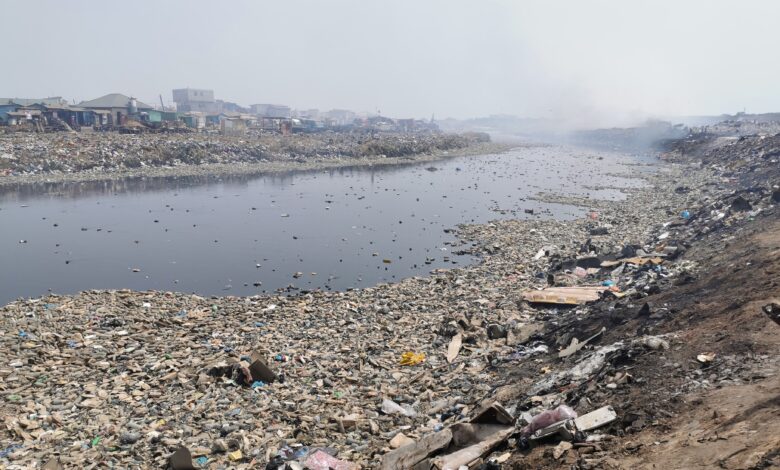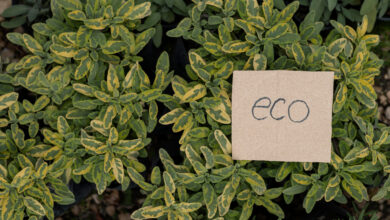How Fast Fashion Contributes to Water Pollution and Practical Solutions

How fast fashion causes water pollution, and the practical solutions to mitigate this pressing issue for a sustainable earth.
Fast fashion has revolutionized the clothing industry, offering consumers affordable and trendy clothing options at an unprecedented pace. However, this convenience comes at a cost to our environment, particularly in terms of water pollution. The production of fast fashion involves numerous processes that require significant amounts of water, resulting in the release of harmful chemicals and pollutants into water bodies.
The various sources of water pollution from fast fashion
Microfibers
The use of synthetic fabrics in the clothing industry, such as polyester and nylon, has increased significantly. These fabrics, derived from plastic, generate microfibers when they break down, which can easily spread throughout water bodies. Microfibers are released at various stages of a garment’s lifecycle, including during production, use, and washing. This form of pollution poses a significant threat to marine life, as the microfibers take hundreds of years to decompose and can be ingested, resulting in bioaccumulation.
Textile dyeing
Textile dyeing is a prominent contributor to water pollution with a significant portion of the chemicals used being dedicated to this process. Globally, it ranks as the second largest polluter of water overall. The prevalence of vibrant and colorful clothing has exacerbated the issue, as wastewater containing dye residues is often carelessly dumped into waterways.
Cotton Farming

Cotton, one of the most widely used natural materials globally is known for its high water requirements. The cultivation of just one kilogram of raw cotton can consume anywhere from 10,000 to 20,000 liters of water, depending on the geographical location. This intensive water usage places a significant burden on local water supplies and communities.
To meet the high demand for cotton, many farms resort to using pesticides and fertilizers, which not only harm soil quality but also destroy essential underground microbial communities and contaminate nearby water sources.
Wet-Processing
Presently, the primary cause of water pollution can be attributed to a process known as wet processing, which takes place after textile fibers have been spun and woven into fabric. During wet processing, fabrics undergo various treatments such as chemical treatments, dyeing, sizing, stitching, and printing to achieve the desired finish. Unfortunately, this stage of textile processing consumes a substantial amount of water and leads to contamination of nearby water bodies.
Solutions
However, even though we may not have control over the entire clothing production process, it doesn’t mean that we are powerless. There are still actions we can take to contribute and make a difference.
Sustainable Cotton Farming
The Better Cotton Initiative, initiated by the World Wildlife Fund, aims to advance sustainable cotton farming practices that minimize environmental harm. This initiative provides support to farmers in implementing sustainable water management techniques, reducing the use of agrochemicals, and fostering fair working conditions. By purchasing from retailers who source their cotton from certified organic cotton suppliers, individuals can contribute to the promotion of sustainable farming methods and reduce their own environmental footprint.
Sustainable Material Choices
To mitigate the environmental impact of fast fashion, brands should prioritize sustainable materials. Natural fibers like organic cotton, hemp, and linen require significantly less water compared to conventional cotton. Additionally, exploring innovative textile alternatives like recycled polyester and regenerated fibers derived from post-consumer waste can reduce reliance on virgin materials and minimize pollution.
Water Management Strategies
Implementing water management strategies throughout the supply chain can significantly reduce water consumption and pollution. Brands can adopt technologies such as closed-loop systems, which recycle and reuse water during the dyeing and finishing processes. Investing in wastewater treatment plants and ensuring compliance with strict effluent discharge standards are also essential steps to minimize pollution.
Circular Fashion
Transitioning towards a circular fashion economy is a key solution to address water pollution and other environmental issues caused by fast fashion. Implementing circular strategies like garment rental, second-hand markets, and clothing recycling programs can extend the lifespan of garments, reduce water-intensive production processes, and minimize waste generation.
Recently, The Disposal Company has organized a webcast to address the importance of circular fashion with Dr. Vikas Kumar, Associate Professor of the Department of Fashion Management Studies, at the National Institute of Fashion Technology, Patna.
Reduced Consumption and Production
Although fashion serves as a potent means of self-expression, and the fashion industry has played a vital role in economic progress and advancement, the present levels of consumption and production are unsustainable and pose grave risks to the environment.
To address this issue, there needs to be a shift in consumer culture towards embracing the long-term use of high-quality garments, repairing or donating older clothing items, and considering the purchase of second-hand apparel.
Conclusion
The connection between fast fashion and water pollution is undeniable. The industry’s reliance on water-intensive processes, combined with the discharge of untreated wastewater containing harmful chemicals, poses a significant threat to our water bodies and ecosystems. It is imperative for all stakeholders to recognize the urgency of this issue and work together towards a more sustainable and responsible future for fashion.
The Disposal Company is revolutionizing the way brands approach climate action in India by offering a cutting-edge platform that empowers them to achieve plastic neutrality and carbon neutrality. Learn more here.




